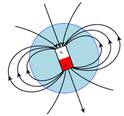Science Center
The Science Center will
- Improve the quality of life for residents of Joplin by increasing community pride and providing a recreational and learning activity to do with their children without having to travel to Springfield, Bentonville, Tulsa, Kansas City, etc.
- Increase economic impact by drawing visitors to Joplin not only to visit the Science Center but to dine in restaurants, shop, and frequent the city’s other attractions.
- Provide partnership opportunities for business and education through the Science Center’s focus on STEAM (Science, Technology, Engineering, Art, and Mathematics).
- Assist local employers to recruit employees from outside the area by providing a showcase attraction that enhances the quality of life expected for their families.
Timeline

Committees

Finance Committee
The Finance Committee provides advice and oversight to the board regarding the Creative Learning Alliance’s annual budget and ongoing financial decisions. They review the financial resources needed to provide programs and services to the community and monitor and ensure the organization works within the annual operating budget.

Facilities Committee
The Facilities Committee is centered around three main tasks: analyzing potential sites/locations, putting together potential budgets/estimates associated with construction (construction of a new building or the rehabilitation of an existing building), and eventually, this committee will become the working committee during design development of the final and or temporary location.



Outreach Committee
The Outreach Committee is the public-facing arm of the organization with exposure to the public being the main objective. The committee has developed several prototype exhibits to serve as examples of what the science center will have to offer. They plan and organize events in which the public can interact with prototype exhibits along with recruiting volunteers to assist in guiding users through each experience. The committee is poised to partner with regional schools and other institutions to promote the organization’s vision.
Governance Committee
The Governance Committee ensures a well rounded, skilled Board and encourage opportunities for Board development while maintaining a list of potential applicants for succession. To monitor and make recommendations to the Board regarding compliance and governance to include but not be limited to, annual meetings, reports, audits, annual evaluations of staff, Board performance, and appropriate paperwork.
Marketing Committee
The Marketing Committee
Exhibits
The Creative Learning Alliance, thanks to the Outreach Committee, has built several mobile exhibits. These exhibits were designed to travel throughout the community and be a hands-on example of the organization’s mission and vision. Read more about each exhibit, and the science behind them, below.
Pendulum Wave
The Science Behind Pendulum Wave
We can’t really explain the “wave” part of Pendulum Wave, until we discuss how a pendulum works. A pendulum is a weight that hangs from a string that can swing back and forth. One end of the string is attached to a specific place on the board and the other end is attached to a weight. Fun fact, the weight on a pendulum is called a bob!
Did you notice the Pendulum Wave has a pattern after you release the board? If you watch closely, the first thing the pendulums do is swing together, then an “S” pattern develops. After this, the pattern looks all mixed up, and then the pendulums move in opposite patterns. The mixed up pattern reappears, then they all realign then the pattern repeats.
How does this work? Each pendulum is a different length, so it has a different rate of how many times it will swing in one minute. Since all the objects are on different lengths of string, they will swing at different times.
The math behind the pendulums is a bit tricky. The formula for figuring the length of each pendulum is complicated! It looks like this:
To figure our pendulum lengths, these are the figures that we used:
![]()
The math may be a little difficult to understand but knowing what a pendulum is and how pendulums can form patterns is a lot of fun!
Levitation Station
The Science Behind Levitation Station
The Maglev Levitation Station uses magnets to levitate or lift the car above the track. How is this done? The track and the car have polar opposite magnets which repel or push away from each other. The magnets on the car are polar opposites of the magnets on the track so they will not touch. The magnetic repulsion, along with the wind hitting the sail, help move the car along the tracks.
What are polar opposite magnets? Magnets have a North Pole and a South Pole.
![]()
If you put two North Pole ends of two magnets together or two South Pole ends together, they will repel or push away from each other. This is what is happening with the Maglev.
![]()
How does the sail help the car move along? The sail has a large surface which captures the wind energy and helps move the car along the track.
Face Swap
The Science Behind Face Swap
Looking through the mirror, you will see your face combined with your partner’s face. The mirror will show you your reflection on your partner’s face.
How does this work? The light bounces off your nose as you are looking in the mirror and that light goes into your eyes. Your brain and your eyes work together to make the image you see in the mirror. Since light waves travel in a straight line, your face has to be behind the mirror in order for the face swap to occur.
How do we see the picture? When the light enters our eyes, it passes through fluids to get to the retina. The retina uses rods and cones to turn the light into signals our brain our brain can interpret.
This works better if you and your partner are equal distances from the mirror. This will make your mirror image to blend together and appear flat.

Balance That Picture
The Science Behind Balance That
As you worked adding blocks to the tipping circle, you probably noticed that it was easier to balance the blocks if you added weight evenly at both sides of the circle. This is known as counterbalance. When you use two weights to counterbalance each other they are known as
counterweights.Counterweights can be used in physics to lift objects and were used during the middle ages to launch items with a trebuchet.
Gravity also plays a role in Balance That. If too many blocks are placed on one side of the disc or circle, the force of gravity pulling down on the blocks will add too much weight to the circle and the blocks will fall.
If you were able to counterbalance your weights, you caused the disc to become balanced which means you have created an even distribution of weight.
If you have a balanced circle it is also said to be stable which means it is not likely to fall.
Center of Attraction
The Science Behind Center of Attraction
Black sand is not like normal sand you see in a sand box. Black sand is made up Magnetite and Hematite which comes from an ore, so it contains metal. When you put a magnet near the black sand, the sand becomes magnetic. In fact, you can make almost any small metal object magnetic if you rub a magnet on it!
You probably noticed when you placed black sand on the magnets, they formed what looks like spikes; in fact, the more sand you add, the spikier it gets. How the sand forms spikes is fascinating, but first you must understand a little about magnets. Magnets attract metal objects and have two poles.
Magnets have a North Pole and a South Pole.
![]()
If you had two magnets and put them together, the South Pole end of one magnet would be attracted to or would pull towards the North Pole end of another magnet.
![]()
What would happen if you put two North Pole ends of two magnets together or two South Pole ends together? They would repel or push away from each other.
![]()
For the sand to become magnetized, the sand must enter the magnetic field of the powerful magnet. The magnetic field is the area around a magnet that has a magnetic force.

To understand why black sand looks spikey, we use what we know about North and South Poles. Black sand becomes magnetic when it is close to a magnet. The grains of black sand attract each other vertically or up and down and repel each other horizontally or side to side. This makes the sand look spikey.
Grains of sand

Ferrofluid Fun
The Science Behind Ferrofluid Fun
Most magnets come from rocks or ores in the earth, so they are in a solid form. However, there are substances that are magnetic that aren’t completely solid. Ferrofluid is an example of this. Ferrofluid is a colloidal substance. What is a colloidal substance? To answer that we have to understand that there are four phases or types of matter. The four phases of matter are solid, liquid, gas, and plasma.
A colloidal substance is a mixture of particles that spread out evenly AND they may be in different phases of matter. This is what makes ferrofluid so unique!
How did we discover ferrofluid? Steve Papell, a NASA scientist, invented ferrofluid in the early 1960’s. It was originally supposed to help fuel rockets but that wasn’t as successful as Mr. Papell would have liked, so he investigated other uses for ferrofluid. Today, ferrofluids are used in skateboards, speakers, hard drives, and even medicine!
Ferrofluid is a liquid that contains small magnetic particles. The particles are so tiny, all of the particles will never settle to the bottom of the glass container.
When you put a magnet next to the container of ferrofluid, the tiny magnetic particles in the fluid are attracted to the magnet so you can make fun shapes.
Hover Around
The Science Behind Hover Around
Floating a ball in a stream of air looks a little like a magic trick. How does this work? Why doesn’t the ball just fly away? The answer can be found in the works of Sir Isaac Newton and Daniel Bernoulli.
Newton’s Third Law of Physics says for every action there is an equal and opposite reaction. This means one thing happening causes another thing to happen. With the floating ball, and outward force (wind) applies an inward force on the ball keeping it in place.
Daniel Bernoulli discovered a scientific principle that not only describes how our beach ball remains in the air, and it also explains why airplanes and kites can fly. Bernoulli’s Principle (This is a quick explanation; it is a lot more complicated…) basically explains that air flowing over the top of an object helps it achieve lift.

If you try to grab the ball when it is floating, you might feel something pulling it back. That force is Bernoulli’s Principle of Flight.
Off to the Races
The Science Behind Off to the Races
The science behind the Off to the Races board is actually a mathematical problem!
It is a Theoretical Probability concept. The formula for theoretical probability looks like this:

This means we are trying to figure out the path the ping pong ball is going to travel down the board.
Every time a ping pong ball hits a peg, it has a 50/50 chance of going to the left of the peg or to the right of the peg. This is true for every peg the ball hits. This concept can be explained with a probability tree diagram.

So, what you are doing, is eliminating the probability of your ping pong ball randomly going in a direction. By creating a path with clothes pins, you have created 100% chance the ping pong ball will bounce the way you want it to.
Parachute Launcher
The Science Behind Parachute Launcher
The Parachute Launcher helps us understand the aerodynamics, velocity, and surface area. Let’s break down each one of these concepts.
The Parachute Launcher is basically a wind tunnel. A wind tunnel is used to test the flight of objects. The wind tunnel provides wind so you can see how efficiently and quickly items can fly in a controlled environment. Seeing how quickly and efficiently an item can fly is known as the science of aerodynamics.
Velocity is sometimes mixed up with the word speed, but in physics they are two different things. Speed is how quickly something moves, and velocity is how quickly something is moving in a particular direction. As you launch your items through the Parachute Launcher, you might notice that some of your items flew higher and straighter than other objects and some objects flew more quickly. Why was that?
It might have been because the objects you created had a lot of surface area. Surface area is all the space that an object takes up. If the flight device had a lot of surface area, it probably floated to the ground slowly. This is great if you are creating a parachute, but an object with a large surface area will have a slower velocity than an object that is aerodynamic. Remember, an aerodynamic object is built to fly efficiently and quickly.
Pattern Maker
The Science Behind Pattern Maker
When you drew lines in the sand on Pattern Maker, you probably noticed that lines you drew curved. These types of spiraling curves are call the Spiral of Archimedes. Archimedes was a Greek mathematician born in the 3rd century BC.
When you drew lines in the sand with your plastic knife, the lines curved to the left. Why did that happen? It’s quite interesting! If the sand had been on a surface that was not moving, when you pulled the plastic knife through the sand it would have formed a straight line. because the surface was spinning, the lines curved to the left.
Why did the lines curve to the right? There are two forces that help explain the curved lines in Spinning Sand. One is centrifugal force and the other is the Coriolis Effect.
Centrifugal Force is an invisible force that pushes on objects when they are rotating. The force pushes objects away from the middle or the axis. For example, if you were riding a roller coaster and the roller coaster went upside down. Centrifugal force will keep you in your seat.
Coriolis Effect is really interesting. The Coriolis Effect describes that objects that are moving appear to curve right in the Northern Hemisphere and curve left in the Southern Hemisphere.
The Way The Ball Bounces
The Science Behind The Way the Ball Bounces
Why does the yellow ball fall when we drop it in the green cup, and how do we get it land in the zone we want?
First, let’s discuss why the ball falls when you drop it in the green cup. The ball is affected by a force called gravity. If we dropped the ball in an atmosphere that had zero gravity, but ball would not drop, but on Earth we do have gravity.
Now, what is gravity? Gravity is an invisible force that makes everything fall towards the Earth. You are experiencing gravity as you read this. Gravity is pushing down on you and keeping your feet on the ground. If we didn’t have gravity, we couldn’t stay on the Earth!
An object has more gravity if it is large or has a lot of mass. Mass means how much matter there is in an object. Big objects have more gravity than smaller objects.
Now that we know the force of gravity makes the ball fall, why does it fall in the specific zone we want it to land? We control the speed of the ball with the different pegs.
What is speed? Speed is how we measure how fast an object is moving. To measure speed we use the following formula: Speed=Distance/(divided by)Time or s=d/t.
Twisted Tangram
The Science Behind Twisted Tangrams
Tangrams are a 7 piece puzzle that were invented in China over 200 years ago. The 7 geometrical shapes are called “tans” and include:
2 large right triangles
1 medium-sized right triangle

2 small right triangles

1 small square

1 parallelogram

Tangrams require us to use our brains to recognize spatial relationships. Spatial relationships or spatial perception helps us locate objects in a given space. If our brains lacked spatial relationships, we would have a difficult time understanding where items are in our world. We might not understand how close or far away an object is so me might run into it. It could also cause writing to be difficult.
Tangrams also help develop our problem solving skills. Our brains use chemicals and electrical energy for problem solving. Studies have also shown that we fire those chemical and electrical energy in the areas of our brains that are important for problem solving, it can help us reduce anxiety.
Founding Funders
Boyd Metals
Corner Greer & Associates, Inc
Joplin CVB
Liberty Utilities
Scott Vorhees, LLC
Sign Designs
Southwest Missouri Bank
The RunAround
Dr. Rob & Kara Arnce
Brent & Regina Baker
Gene & Paula Baker
Dr. Lance & Sharon Beshore
Audie & Melodie Dennis
Jarrod & Melissa Hogan
Randal & Shelly Kraft
Dr. Melinda & Greg Moss
Jeffrey & Carolina Neal
Lisa Nelson
Rob & Marge O’Brian
Gary & Vickie Pulsipher
John & Dory Quinn
Ron & Patty Richard
Alecia Ward & Michael Doten
Brian & Catherine Ward
Joshua & Kimberly Welch
Clifford & Pamela Wert
This post is also available in: Español (Spanish)